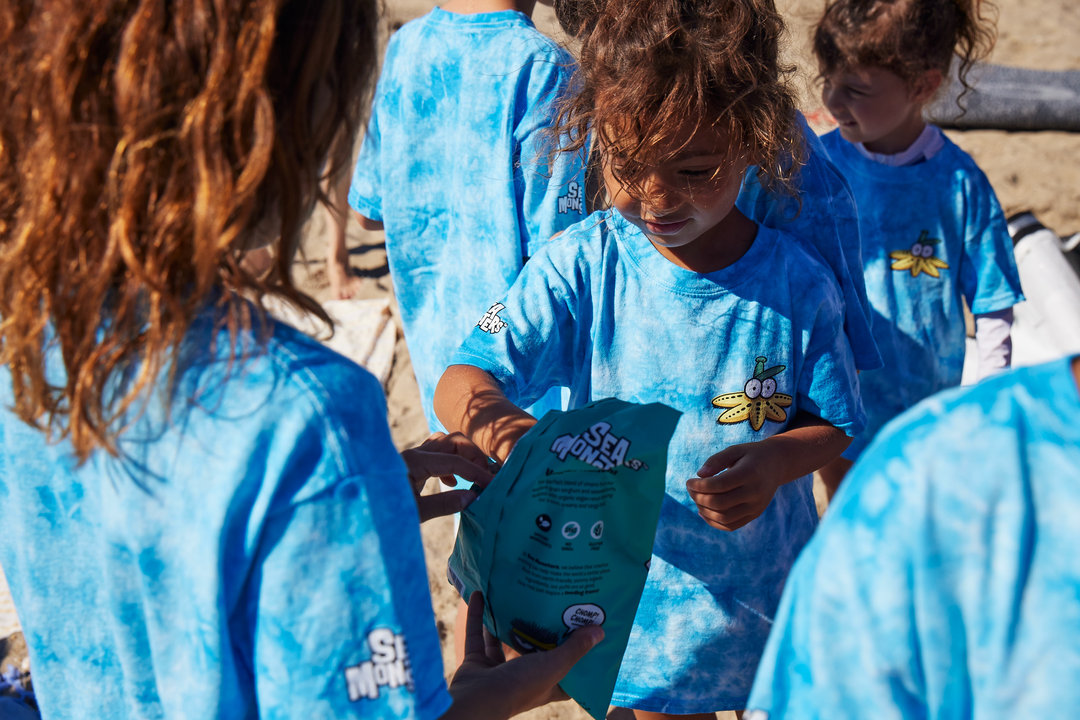Can these brands make seaweed and algae go mainstream in the U.S.?
Seaweed has been touted as a super-ingredient in recent years. But while brands have explored its use in food, beauty and clothing products, its use is still not mainstream in the U.S.

Sea Monsters sells puffs made from sorghum and seaweed. (Photo: Sea Monsters)
FUTURE INGREDIENTS
2023 will be all about the algae, according to the latest data from Pinterest.
The mood boarding website says that searches for ‘green algae’ rose 60% between September 2020 and September 2022, while searches for ‘seaweed snack recipes’ were up 245%.
It’s not the first time seaweed has been trending as a wonder ingredient: in 2019, the New York Times called kelp the ‘climate-friendly vegetable you ought to eat’, while the Guardian was already questioning its superfood status back in 2017.
This momentum now seems to be coming to a head. While seaweed remains far from being a staple of U.S. diets, over the next four years North American consumers will contribute to 30% of the global market growth in seaweed snack sales, according to Technavio.
Seaweed’s super powers
Seaweed’s eco-friendly and health credentials are not without merit: as a food substance, it is a nutrient-dense food that doesn’t need to be fed. It also grows astonishingly quickly: according to Fortune, giant kelp can grow up to two feet per day. It’s also great for the environment, sucking up carbon dioxide as it grows.
Brands in all categories are experimenting with how they can use this ingredient. In November, wellness brand The Nue Co launched a new fragrance called Water Therapy that features seaweed as one of its scent notes and is designed to mimic the ocean’s calming effect. Skincare brand Osea uses seaweed as an active ingredient in its serums and moisturizers, while four-year-old dog food brand Petaluma boosts its kibble with ingredients like microalgae and kelp meal.
Seaweed is also appearing in new ways in the human food aisles. Umaro is a brand that makes plant-based bacon from red seaweed, which it says has a meaty taste and that it sells to restaurants. Atlantic Sea Farms, meanwhile, sells plant-based ‘sea veggie’ burgers and kelp cubes, which are designed to be used in smoothies.
“Everyone can agree that seaweed is going to be a big part of food’s future, and everyone agrees that it’s fantastically nutritious, easy to grow and great for the environment,” says John Lee, the cofounder of seaweed puff brand Sea Monsters. “But if you placed a bowl of seaweed in front of most people in the U.S., they wouldn’t know what to do with it.”
Sea Monsters’ puffs have the familiar shape of a Cheeto, only they are made with a mix of sorghum and seaweed. The range features a number of all-American flavors, too — think sour cream and onion, and cheese pizza — with a nutty, earthy undercurrent of roasted seaweed.
@thingtesting Testing whole-food nutrition bites powered by seaweed from Rootless 🫘 Follow us at @thingtesting for more honest reviews of online brands! #reviews #productreview #branding #rootless #dtc #food #snacks #cpg #wholefoods #tastetest #vegan #plantbased #plantbasedtiktok #nutrition #seaweed #vitamins #thingtesting ♬ original sound - Thingtesting
From sea farm to table
Sea Monsters sells its products predominantly online, and the brand’s goal for 2023 is to build a nationwide retail presence — it is currently in talks with some of America’s biggest grocery chains, the founders say.
But the challenge seaweed-powered brands face in the U.S. isn’t just about helping a wide range of consumers get accustomed to the taste — there are also practical challenges.
It can be tricky to get hold of the ingredient in the format that’s needed to make certain foods — for example Jiae Kim, Sea Monsters’ cofounder, says the brand uses powdered nori to make its puffs, which isn’t easy to source within the U.S. It currently imports the ingredient from Asia.
Kim says the seaweed industry in North America is still “nascent.” “Seaweed production is very sophisticated in Asia and in parts of Europe,” she says. “But in the U.S., because there isn’t as much of a market for it, it is tricky for seaweed growers and producers.”
According to Island Institute, 95% of the seaweed consumed in the U.S. is imported. Sea Monsters’ founders argue that a home-grown seaweed farming industry could be the key to making these products take off in the U.S. — making it more financially viable for brands to work with the ingredient.
Atlantic Sea Farms, founded in 2006 and which opened the first commercial seaweed farm in the U.S., is showing how it could be done. In 2022, it estimated that its annual spring harvest would net 1.2 million pounds of the slimy stuff.